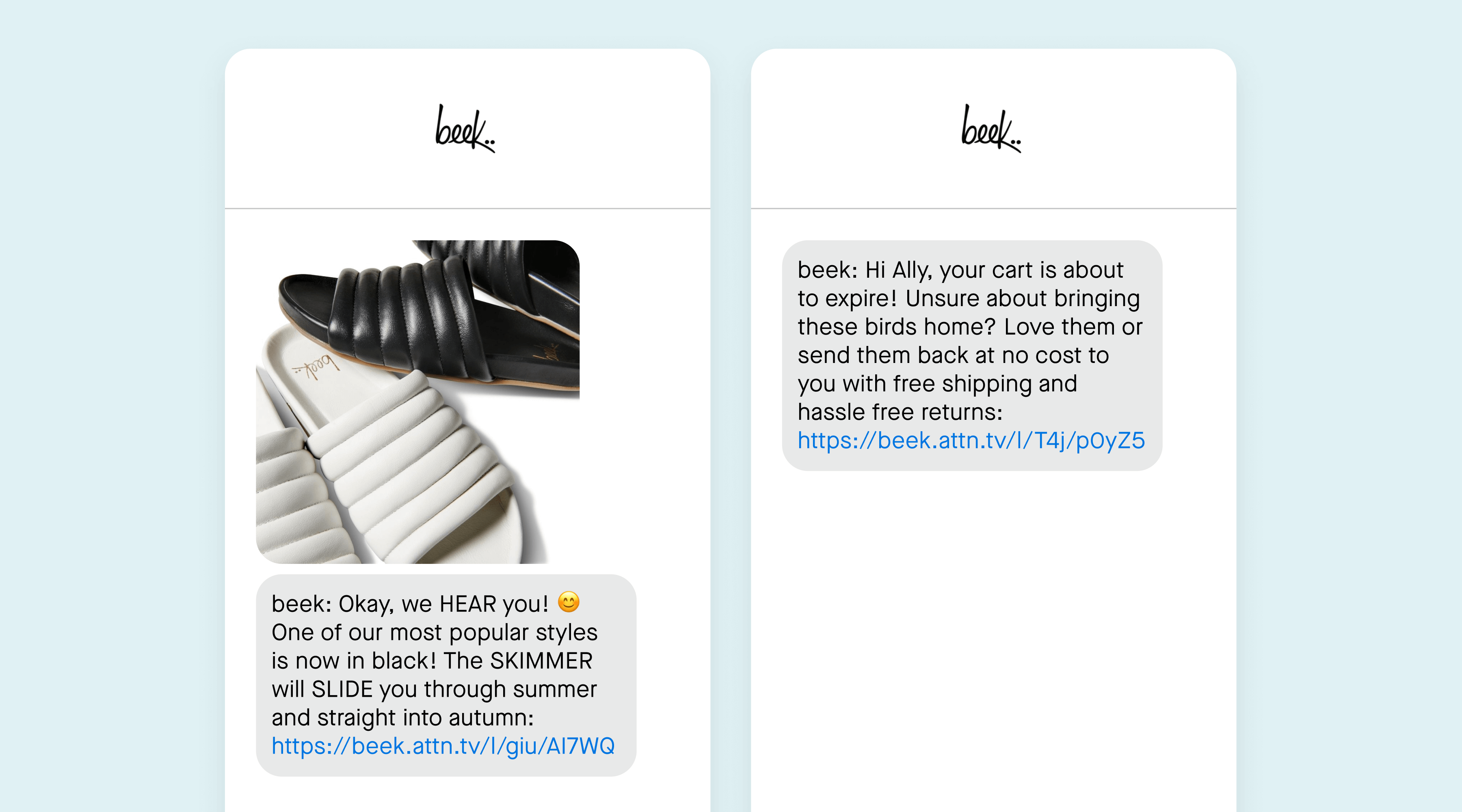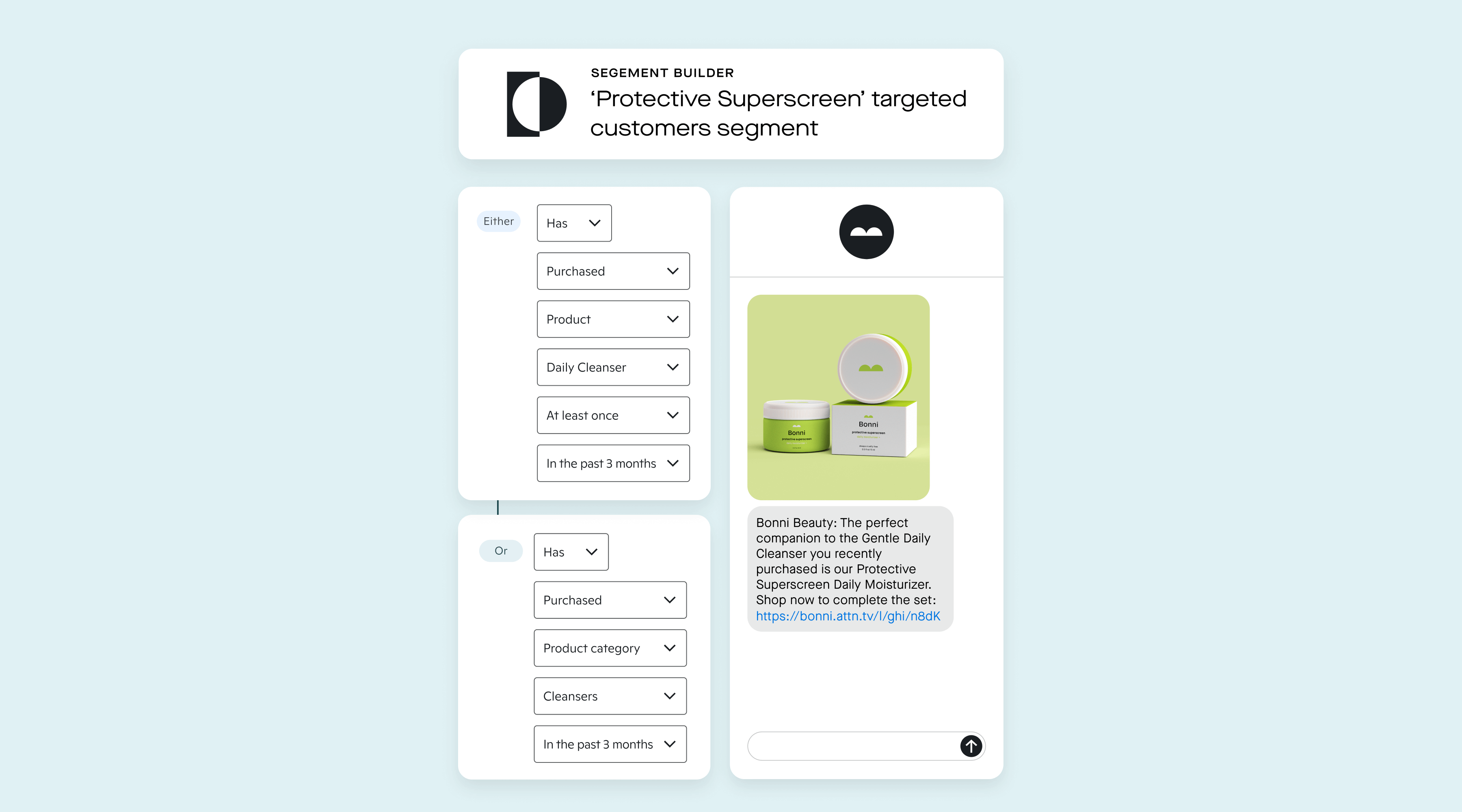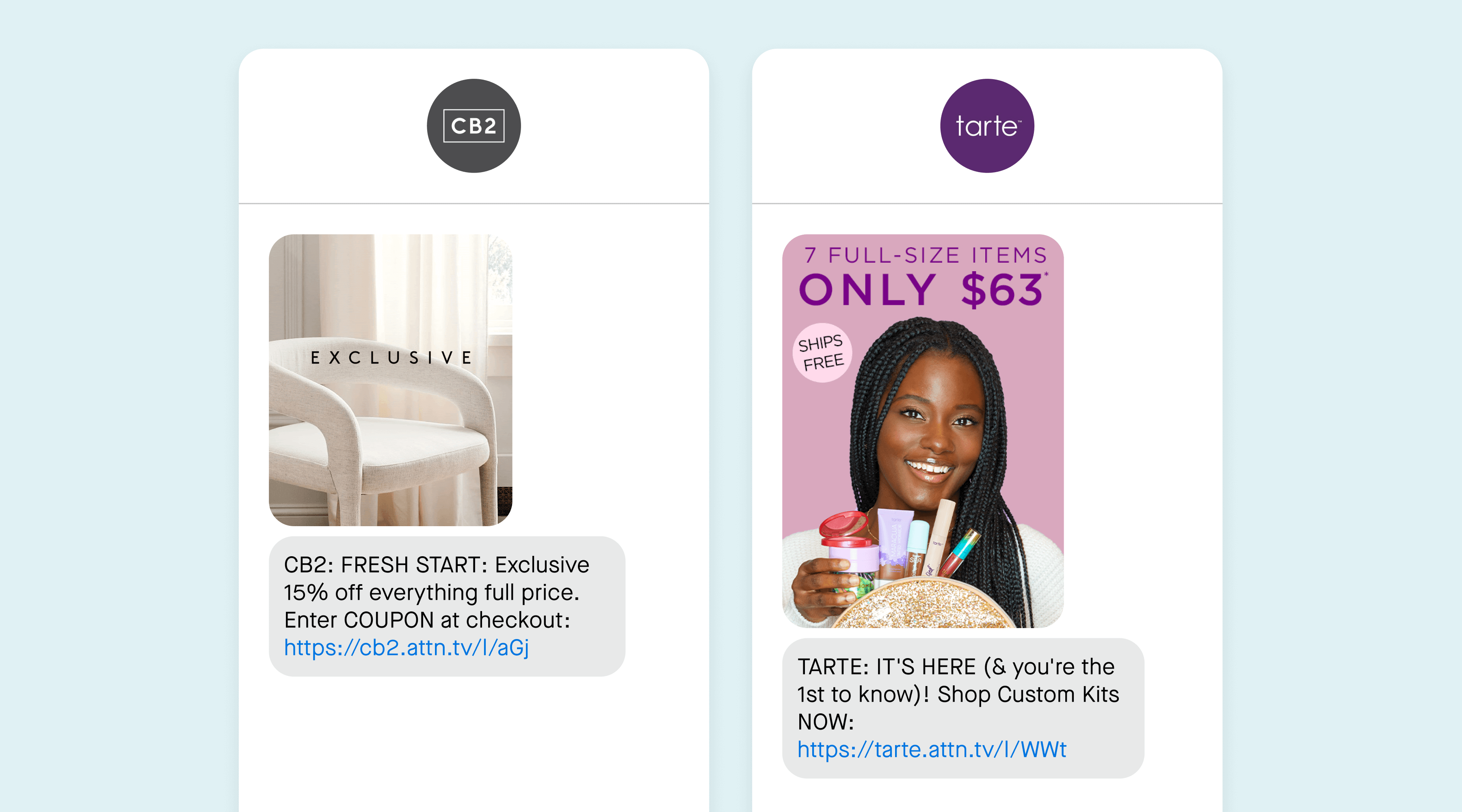
New releases
A smarter, simpler Attentive
Explore new features →
Explore new features →

Have you ever struggled to find the perfect birthday gift for someone? Even the most easy going friend or family member has their own unique preferences. And if it’s someone on the choosier side? You can agonize over your decision for days.
You want your gift to be something they’ll enjoy, that aligns with their interests and personal taste. You want to make sure it’s something they’ll actually use or that makes sense for their lifestyle. But most of all, you want them to know you put real thought into their gift to show how much you appreciate them.
Your SMS subscribers expect the same treatment. That’s why text messages that are tailored to their wants and needs are more likely to inspire action and drive incremental revenue.
We’ve written about segmentation best practices (check it out if you haven’t already). In this post, we’re taking a deep dive into how to build a sophisticated SMS marketing segmentation strategy (with those best practices in mind), including:
But first, here’s a quick overview of customer segmentation.
Customer segmentation is the process of dividing your customer base into different groups or lists based on shared attributes or behaviors, such as: geographic location, loyalty status, engagement level, and browsing or purchase history.
Doing this allows you to reach and engage each group—or segment—more effectively by sending them targeted content that aligns with their specific interests or preferences.
Depending on your specific goals for SMS and who you’re trying to reach with each text message you send, you can create audience segments based on:
Before you start segmenting your audience, it’s important to understand how the frequency and types of one-time marketing messages—also known as campaign messages—impact engagement and performance. Start by making sure you’re sending the right number of messages to your entire subscriber list. We recommend sending around eight text messages per month to maximize revenue per send, but it’s important to experiment to find the ideal cadence for your SMS audience.
Send messages for different marketing “events”—such as special promotions or new product announcements—to better understand which types of messages generate the most subscriber engagement.

Evaluate how your subscribers respond to the cadence and content of your campaign messages by analyzing click, conversion, and opt-out rates. Use these insights to determine how often you should send your subscribers messages and which types drive the best results.
Your goal over time should be to customize these messages to appeal to specific audience segments—such as your most engaged SMS subscribers—instead of sending the same messages to everyone.
Triggered messages are another great way to start personalizing your SMS program. They’re sent based on a subscriber’s specific actions or behaviors. For example, abandoned cart reminders are sent after a subscriber has left something in their online shopping cart and include details about the product they were looking at. And welcome messages trigger after a new subscriber signs up for text messages, introducing them to your SMS marketing program and delivering their sign-up incentive.
You have plenty of opportunities to experiment and learn what works best with your subscribers in both triggered and campaign messages. You can A/B test copy variations, emoji usage, or other content strategies to see which texts perform best. Remember to run multiple A/B tests—testing just one variable at a time—to gather enough data to deliver a statistically significant result. These tests will serve as the foundation of your future segmentation and personalization strategies.
Footwear brand BEEK sends their subscribers multiple text messages per week about new products, promotions, and bestsellers. They also use triggered messages to engage their subscribers based on actions they’ve taken, including browse abandonment reminders that highlight their free shipping and hassle-free return policy and post-purchase messages that encourage customers to write reviews of items they’ve purchased.

Once you’ve established a campaign messaging cadence and triggered messaging strategy tailored to your audience, work to personalize your messages using audience segmentation.

With Attentive’s segment builder, you can create dynamic audiences based on subscriber data you’re actively capturing, such as actions, preferences, locations, and more. These segments update in real time for more effective, relevant SMS targeting. For example:
.png)
Use your audience segments to support key marketing events, tailoring your messaging to appeal to different groups based on their unique characteristics and interests.
Try creating a segment of "window shoppers" who've clicked on at least one of your text messages within a certain period (e.g., in the last 45 days) but haven't converted. Then, send a customized follow-up campaign message to this group of subscribers, including a discount code to incentivize them to make a purchase. You can also target this segment with special offers, such as new markdowns.
Both options are a great way to drive conversions from subscribers who are engaged enough with your channel to click, but might need the extra nudge or incentive to make a purchase.
After you’ve personalized your text messages using audience segmentation, you should determine how your segmentation strategy can be used to reward and retain your most valuable subscribers. Use subscriber data to identify your best customers, and develop messaging that will build long-term loyalty and maximize revenue growth.
Create segments that subscribers can “unlock” by taking certain actions, such as “VIPs” who’ve spent a certain amount with your brand over a specific time period. Use total number of purchases, purchase frequency, and total spend to help develop your VIP segment and spotlight your most loyal subscribers who are also most likely to convert.

Keep your VIP subscribers engaged by consistently recognizing their support of your brand and rewarding them with valuable content, such as exclusive discounts or early access to new products.
If you want to use existing data or segments from your other marketing channels, you can also use integrations to align customer profiles from your brand’s tech stack with Attentive. For example, use data from your e-commerce platform—such as lifetime spend, order count, and marketing opt-in status—to help create segments. Or, integrate an existing VIP or loyalty program with your SMS channel and strategy.
Beauty brand Mented Cosmetics develops VIP segments based on subscribers who’ve spent a set dollar amount. To reward these shoppers for their loyalty, the brand gives them early access to new products and provides bonus offers, such as free shipping with their orders.Implementing a strategy like this can help you connect with your most engaged audience and make sure they get the personalized attention they deserve.

Implementing a strategy like this can help you connect with your most engaged audience and make sure they get the personalized attention they deserve.
Bottom line: Personalized text messages are far more likely to engage your subscribers and increase incremental revenue. Check out more tips for tailoring your messaging to your target audience, so you can drive the best results from SMS.